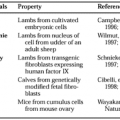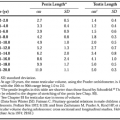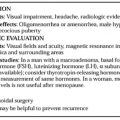BIOCHEMISTRY OF BONE
Part of “CHAPTER 56 – MARKERS OF BONE METABOLISM“
Bone is composed of ˜70% mineral and 30% organic matter. The mineral, primarily in the form of hydroxyapatite [Ca10(PO4)6(OH)2] crystals, is embedded in and aligned with the collagen fibrils, which play an important role in crystal formation. This calcium-collagen composite ensures the two main functions of bone: providing a structural framework and acting as a reservoir for mineral ions.
The organic phase of bone is made of cells and a protein matrix, of which ˜90% is collagen type I. Bone also contains a large number of different proteins, glycoproteins, and proteoglycans, many of which are negatively charged (Table 56-3). Although their precise functions are not established, these noncollagenous proteins are probably associated with the organization and mineralization of the skeletal matrix.
Collagen is synthesized by osteoblasts as a larger precursor molecule. This “procollagen” molecule contains the triple helix portion, which bears several hydroxyproline residues, and globular extensions at the N- and the C-terminal ends (i.e., N- and C-terminal propeptides). After secretion of the collagen molecule, these propeptides are removed en bloc by specific proteases at the cell surface. The C-terminal propeptide remains intact and appears as a 100-kDa protein in the blood. The helical collagen molecules spontaneously assemble into fibrils, which are then covalently cross-linked to impart the necessary tensile strength. This process is initiated extracellularly through the action of a single enzyme, lysyl oxidase. Thereafter, reactions of the lysine-derived aldehydes occur spontaneously and culminate in the formation of trifunctional pyridinium cross-links (Fig. 56-1). Unlike hydroxyproline, which is already present in the newly synthesized protein, the pyridinium cross-links are found exclusively in mature collagens of the established extracellular matrix. Of the two cross-link analogs produced, deoxypyridinoline is located primarily in bone collagen. Pyridinoline occurs in cartilage and other soft tissues as well as in bone (see Chap. 189).
Stay updated, free articles. Join our Telegram channel

Full access? Get Clinical Tree







